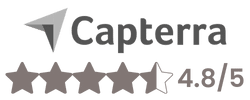
Healthcare regulatory compliance means healthcare organizations are meeting a wide range of laws and standards that includes everything from billing and safety to data protection and patient rights. This compliance means ensuring patient safety, protecting their privacy, and making sure quality care is delivered.
With annual U.S. healthcare expenditures exceeding $4.5 trillion, strong healthcare industry regulations are more important than ever. For compliance professionals, understanding how these different rules interact, including HIPAA, the Stark Law, the Anti-Kickback Statute, FWA, OIG guidance, and OSHA regulations, is key to creating a safe healthcare environment of the highest quality.
In this discussion, we will take a closer look at how these regulations work together to support better care, protect patients, professionals and data integrity, and help healthcare organizations stay on track.
The Purpose of Regulatory Compliance in Healthcare
These regulations are designed to protect patient safety, ensure the privacy and security of clinical data, and promote high standards of care across the healthcare system. Whether it is an individual practice, a small clinic, or a large hospital network, every healthcare provider is expected to comply with a wide range of requirements that shape how care is delivered.
In essence, healthcare regulatory compliance is about more than just checking boxes or avoiding penalties. It is about creating an environment where patient trust, quality care, and professional accountability are the norm. When healthcare organizations take compliance seriously, they develop strong internal policies and systems that help detect potential issues early, before they escalate into legal or financial problems.
However, it does not stop with policies. Compliance must become part of the organizational culture. Everyone from leadership to frontline staff plays a role in upholding ethical behavior, following policies and procedures, and understanding their individual responsibility to do the right thing. That means regular training, open communication, and a shared commitment to integrity and transparency.
The benefits of strong compliance are significant. It ensures patient data protection, especially in an age where electronic health records (EHRs) are central to care. Patients deserve to know their sensitive information is safe from unauthorized access and misuse.
Non-compliance can be very costly: data breaches, fraudulent billing, unsafe work environments, and failure to follow care protocols can all lead to serious legal consequences, hefty fines, and damage to a healthcare provider’s reputation. More recently, cyberattacks have become a growing threat, targeting valuable patient data.
Ultimately, healthcare industry regulations protect everyone: patients, professionals, and organizations. Compliance is not a one-time task; it is an ongoing process that adapts as laws and technology evolve. Keeping up may be challenging, but the cost of falling behind is greater. This is why healthcare administrators and compliance professionals must stay informed and engaged, because at the center of it all is the patient, and their safety, dignity, and well-being must always come first.
The Key Regulations That Protect and Govern the Healthcare System
Among the many healthcare industry regulations, six stand out for their central role in shaping how care is delivered, how healthcare organizations function, and how both patients and providers are protected. Understanding each of these, along with how they intersect, is critical to building a compliant, ethical, and safe healthcare environment.
Fraud, Waste, and Abuse (FWA)
Fraud occurs when providers deliberately deceive payers, often by billing for services that were never provided. Waste involves the overuse of healthcare services, often driven by inefficiencies or unnecessary treatments. Abuse refers to practices that are inconsistent with accepted medical or business standards, even if not intentionally deceptive. These behaviors not only drain billions from the healthcare system but also undermine public trust. Preventing FWA requires constant oversight, internal controls, and a strong culture of ethics throughout every level of an organization.
The Stark Law
This law helps ensure that medical decisions are made in the best interest of patients, not influenced by financial relationships. It prohibits physicians from referring Medicare or Medicaid patients for certain designated health services, like lab work, imaging, or physical therapy, to entities with which they have a financial connection. Violating the Stark Law can result in hefty fines and exclusion from federal healthcare programs.
Anti-Kickback Statute (AKS)
This statute is closely related to the Stark Law, but broader in scope. It makes it illegal to knowingly offer, pay, solicit, or receive anything of value in return for referrals involving services covered by federal healthcare programs. This includes not only providers, but also pharmaceutical companies, device manufacturers, and others. The AKS helps ensure that patient referrals and treatment decisions are based on need and clinical judgment, not financial gain, thus reinforcing ethical behavior in every part of the care process.
Office of Inspector General (OIG) Compliance
The Office of Inspector General plays a key oversight role in the healthcare system. Created within the Department of Health and Human Services, the OIG is responsible for detecting and investigating fraud, auditing federal healthcare programs, and issuing compliance guidance for providers. It works in close collaboration with agencies like the Department of Justice to hold violators accountable and recover misused funds.
Health Insurance Portability and Accountability Act (HIPAA)
HIPAA’s Privacy, Security, and Breach Notification Rules outline strict standards for how protected health information (PHI) is accessed, stored, shared, and safeguarded. It applies not only to providers and insurers, but also to third-party vendors and business associates. Non-compliance can result in severe financial and legal consequences. As healthcare continues to digitize, (such as EHR and Telemedicine), HIPAA remains the cornerstone for ensuring that patients’ sensitive data stays secure and confidential.
Occupational Safety and Health Administration (OSHA)
OSHA regulations ensure the safety and well-being of the healthcare workforce, which in turn supports a safe environment for patients. Established in 1970, OSHA sets and enforces standards for workplace conditions, including exposure to hazardous materials, proper training, and infection control. Healthcare organizations are required to maintain safety records, report workplace injuries, and protect employees from avoidable risks. Non-compliance can result in steep fines and increased liability. Prioritizing OSHA compliance is essential for minimizing workplace incidents and promoting a culture of safety and responsibility.
Together, these six key regulations provide the structure and accountability necessary to support high-quality, patient-centered care. They are deeply interconnected and work together to protect lives, promote trust, and ensure that healthcare organizations operate with transparency and integrity.
The Intersectionality of Healthcare Industry Regulations
While each healthcare regulation serves a distinct purpose, they do not operate in isolation. In fact, the strength of healthcare regulatory compliance lies in how these laws intersect to create a comprehensive framework that protects patients, professionals, and healthcare institutions alike. For example, the Stark Law and the Anti-Kickback Statute both aim to prevent conflicts of interest and unethical referrals, but when combined with OIG oversight, they also support proactive detection and prevention of fraud and abuse. HIPAA regulations intersect with these by safeguarding the privacy of the data used in billing and referrals, while OSHA ensures the physical safety of healthcare workers and the locations where these services are delivered.
Understanding the intersectionality of healthcare industry regulations helps compliance professionals see the bigger picture of a system built not just on individual rules, but on an integrated approach to ethics, safety, and accountability.
Effective compliance programs recognize these connections, aligning internal policies, staff training, and reporting systems to reflect the shared goals of patient safety, privacy, and professional accountability. The result is a more resilient organization and a stronger foundation for high-quality care.
Summary: The Critical Role of Regulatory Compliance in Healthcare
Healthcare regulatory compliance is far more than a legal requirement; it is the foundation of safe, ethical, and high-quality patient care. By adhering to key regulations like HIPAA, OSHA, the Stark Law, the Anti-Kickback Statute, FWA guidelines, and OIG oversight, healthcare organizations protect patient privacy, ensure workplace safety, prevent fraud, and uphold professional integrity. These laws work together to support an environment where patients can trust their care providers, data is secure, and decisions are guided by what is best for health, not financial incentives.
As regulations continue to evolve, staying compliant requires constant attention, training, and a culture rooted in accountability. For healthcare professionals and administrators, understanding and embracing healthcare industry regulations is essential not only to avoid risks, but also to respect the trust placed in them every day. Ultimately, strong healthcare regulatory compliance leads to better outcomes, for patients, providers, and the entire healthcare system.









